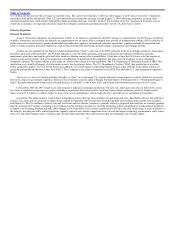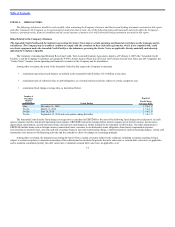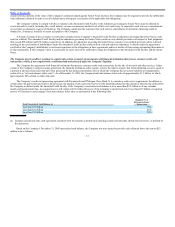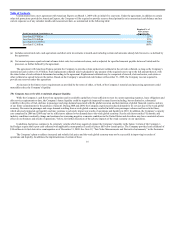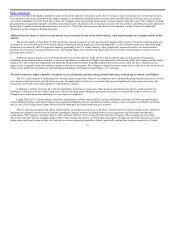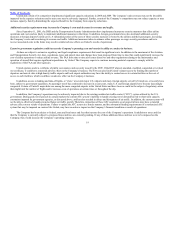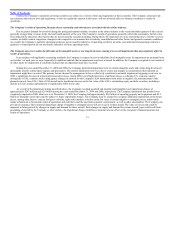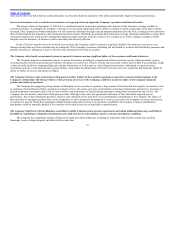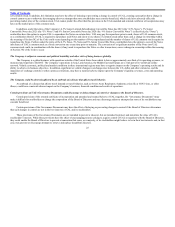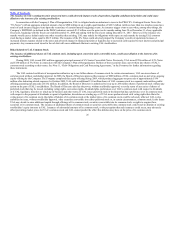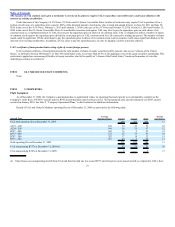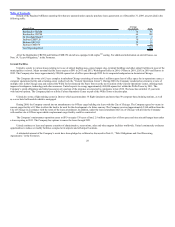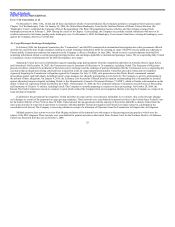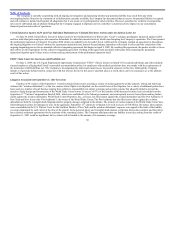United Airlines 2009 Annual Report Download - page 24
Download and view the complete annual report
Please find page 24 of the 2009 United Airlines annual report below. You can navigate through the pages in the report by either clicking on the pages listed below, or by using the keyword search tool below to find specific information within the annual report.
Table of Contents
Many aspects of United’s operations are also subject to increasingly stringent federal, state and local laws protecting the environment. Future
environmental regulatory developments, such as in regard to climate change, in the United States and abroad could adversely affect operations and increase
operating costs in the airline industry. Some climate change laws and regulations that have gone into effect apply to United, including environmental taxes for
certain international flights (including the United Kingdom’s Air Passenger Duty), limited greenhouse gas reporting requirements and land-based planning laws
which could apply to airports and could affect airlines in certain circumstances. Other areas of developing regulations include the State of California rule-making
regarding air emissions from ground support equipment and federal rule-makings concerning the discharge of deicing fluid and the regulation of aircraft drinking
water supplies. In addition, a 2009 EU Directive required EU member countries to enact legislation that would include aviation within the EU’s existing carbon
emissions trading scheme, effective in 2012. The legality of applying such a scheme to non-EU airlines has been widely questioned. In December 2009, the Air
Transportation Association, joined by United, Continental and American Airlines, filed a lawsuit in the United Kingdom challenging regulations that transpose
into UK law the EU emissions trading scheme as applied to U.S. carriers. In addition, non-EU countries are considering filing a formal challenge before the
United Nations’ International Civil Aviation Organization with respect to the EU’s inclusion of non-EU carriers. It is not clear whether the trading scheme would
withstand such challenges. If the scheme is found to be valid, however, it could significantly increase the costs of carriers operating in the EU (by requiring the
purchase of carbon credits), although the precise cost to United is difficult to calculate with any certainty due to a number of variables, and will depend, among
other things, on United’s carbon emissions from flights to and from the EU, and the price of carbon credits. Actions also may be taken in the future by the U.S.
government, state governments within the United States, foreign governments, the International Civil Aviation Organization, or by signatory countries through a
new global climate change treaty to regulate the emission of greenhouse gases by the aviation industry. The precise nature of any such requirements and their
applicability to United are difficult to predict, but the impact to the Company and the aviation industry would likely be adverse and could be significant,
including the potential for increased fuel costs, carbon taxes or fees, or a requirement to purchase carbon credits.
The ability of U.S. carriers to operate international routes is subject to change because the applicable arrangements between the United States and foreign
governments may be amended from time to time, or because appropriate slots or facilities may not be made available. United currently operates on a number of
international routes under government arrangements that limit the number of carriers, capacity or the number of carriers allowed access to particular airports. If
an open skies policy were to be adopted for any of these routes, such an event could have a material adverse impact on the Company’s financial position and
results of operations and could result in the impairment of material amounts of related tangible and intangible assets. In December 2009, the United States and
Japan entered into an open skies agreement, which is currently expected to become effective in the fall of 2010, subject to certain conditions precedent being met.
To the extent the open skies agreement results in excess capacity relative to demand, it could negatively impact the value of United’s U.S.-Japan business. For
example, as competing carriers will be able to obtain open route rights from United States and Japanese government authorities under the agreement, the value of
the Company’s current routes from the United States to Japan and beyond and slots related to these routes could be impaired. In addition, the value of the
Company’s business could be negatively impacted if a Japanese air carrier enters into a revenue sharing joint venture alliance agreement with any of our
principal competitors in the U.S.-Japan market, which is possible under the open skies agreement.
The Company’s plans to enter into or expand antitrust immunized joint ventures for various international regions, involving Continental, United and other
members of the Star Alliance are subject to receipt of approvals from applicable federal authorities or otherwise satisfying applicable regulatory requirements,
and there can be no assurances that such approvals will be granted or applicable regulatory requirements will be satisfied. In December 2009, the Company and
Continental applied jointly with All Nippon Airways to the DOT for immunity from U.S. antitrust laws for a series of alliance agreements between and among
the carriers, including a transpacific joint venture, which is currently pending approval from the DOT. Other air carriers are also seeking to initiate or expand
antitrust immunity for joint ventures which, if approved, may adversely affect the Company’s financial position and results of operations.
20


